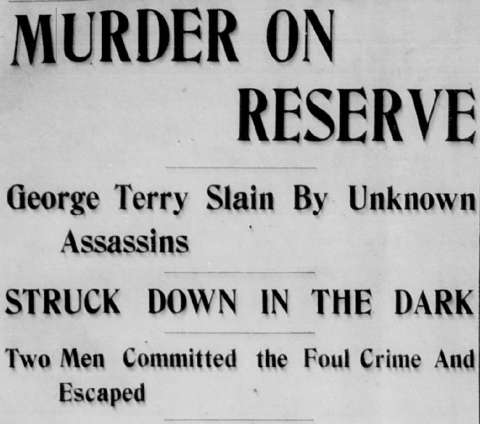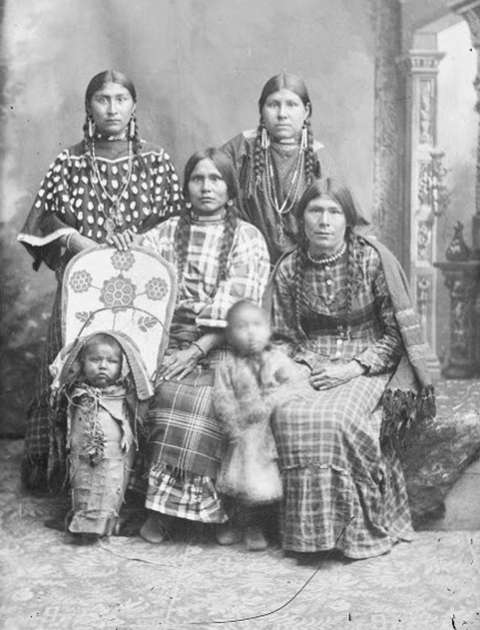The Rabbit Holes of History


By Kylie McCormick
Dick Blust’s latest WyoHistory.org article, “Three Photos, a Murder and a Murky Outcome,” opens with a scene familiar to anyone working in the museum and visitor center field: a visitor’s question, shining a light down a research rabbit hole just begging you to follow along. The story uncovered by the staff at the Sweetwater County Historical Museum started with a simple question, “Who are the women in this photograph?”
I’ve been lucky to work behind the front desk of an interpretive center. Some questions you get every day, and you share the answers like you are walking a visitor down a well-worn trail. Other questions lead to unfamiliar trails that have been well worn by others, and still other questions lead to rabbit holes. Blust’s rabbit hole led him to a story of a difficult marriage set against the backdrop of difficult reservation politics. Was George Terry murdered for how he treated his wife, Kate Enos, or was he assassinated for helping to open Indian lands to white settlement?
Reading the article for the first time, I was impressed with the clean writing and gripping story. But there was one small detail bothering me… my own little rabbit hole. The original article included a quote from an excellent 2013 dissertation by Brandi Lynn Hilton-Hagemann describing George Terry’s murder. The description didn’t match the way the crime was originally depicted—the newspaper report described a quick and brutal attack: Terry left a public meeting and walked a short distance from the building before being grabbed and knocked over the head repeatedly. He was found moments later taking his dying breaths. Hagemann’s dissertation added the detail that the attackers then “cut his body into several pieces.” I found myself wondering, was this a quick and brutal attack or something akin to Jack the Ripper?
Fortunately for me, since 2003 the Wyoming Digital Collection Suite has been digitizing Wyoming’s historic newspapers and offering them to the public for free. There, splashed in the headlines of 1907—George Terry’s murder—and all the details of the crime I wanted. As historians, we often have to decide what sources to trust and why. For this article and this crime, we trusted the details coming from newspapers in Lander, closest to the murder.
The Lander papers mentioned an unopened pocketknife in Terry’s hand: perhaps his failed attempt at self-defense. Less than a week later a Cheyenne paper, The Wyoming Tribune, ran an obituary for Terry “Led a Romantic Life.” This paper described a Caesar-style assassination, “his body cut to pieces with knives,” which was then repeated in papers across the state. Later reports of the crime and its investigation only included the detail of the unopened pocketknife and the brutal bludgeoning, nothing of a stabbing. Quite the rabbit hole; we deleted the Hagemann quote.
Once in the thick of the newspapers, I found other details coloring in the lines of the story so expertly crafted by Dick Blust. Stories of Terry’s Mormonism, evidence of his wife accompanying his body to Salt Lake City, and more details of John McAdams’ recanted confession. I left my rabbit hole even more impressed with Dick Blust for writing such a clear story from the murky details of this unsolved crime while placing it in the context of the shrinking reservation of 1907.
Kylie McCormick is an assistant editor at WyoHistory.org.
